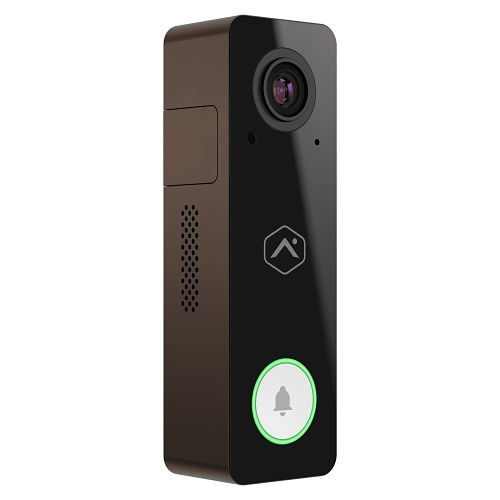
To create an event that triggers an action on your automation device, you must log in to the Alarm.com customer website. Click the automation menu selection and find the add new rule button. Here you can name the rule, select the event, the action, the device, and when the rule is active.
Alarm.com is a premier interactive service. It allows users to control their alarm system, not just locally, but also remotely. It provides access to automation devices, cameras, and the panel itself. You can manage users and set up email, push, and text notifications when various panel events occur. Alarm.com can be accessed via an app on a mobile device or a web browser on a computer. The Alarm.com mobile app is available on iOS and Android app stores. On a computer, navigate to alarm.com to log into the website. To create an event-triggered rule, you must use the customer website. It is not an option on the mobile app.
To create an event-triggered rule on the Alarm.com customer website, follow the steps below:
1. Login to the Customer Website. Go to www.alarm.com on a compatible browser and log in with your Alarm.com credentials. If you have 2-Factor Authentication (2FA) enabled, proceed through authentication. Be aware that the options available to you on the Alarm.com customer site will depend on your login credentials and permissions. For full access, be sure you're logging in with the Administrator (Master) credentials.
2. Select Automation. On the left there will be a menu with various options. Select Automation.
3. Add New Rule. On the upper-right side of the screen, you will see the add new rule icon. Select this to begin.
If you do not have any pre-existing rules, in the center of the screen there will be another option to begin adding a new rule. You can also select this to begin.
4. Select Event-Triggered Rule. Depending on what features you are using on your Alarm.com account, the options you see will differ concerning what type of rule you can create. Various options can include Event-triggered, Image Sensor, Video, or Thermostat Rules. If none of the other features are being used, it will automatically take you into setting up an Event-Triggered Rule.
5. Name your Rule. Decide what you want to call the rule. Remember to use a name that will allow you, later down the road, to understand what the rule is for.
6. Select Device Category to Automate. Select which device you will be automating. Some options include Lights, Locks, Security System, Garage Door, and Water Valves. From here, options will vary based on your account. Please see the table below for various options.
7. Choose the Event. Select what event will trigger your action. Options can include Alarm, Arm/Disarm, Sensor Activity, Garage Door, People crossing a Geo-Fence, Doorbell Camera, or Lock. These options are shown in our table above and will depend on your "Automate My" selection.
8. Select the Action. Choose what action the selected device will perform. The options here include Turn On, Turn Off, Dim, Lock, Arm Stay, Arm Away, Open, and Close. With Lights and Water Valves, you also get an option for how long the action will take place, such as a specified time limit, or indefinitely. The indefinite option is typically used when there is another automation to set the device back to normal.
9. Select Devices. Choose from the list of enrolled devices, from the category you selected earlier. Again, the login used to access Alarm.com will determine whether or not you have access to all of the devices tied to the account. For full access, be sure to log in as the Administrator.
10. Select When the Automation will take Place. Select the time frame when the automation will be enabled. You can choose to allow this rule to run at all times, or only during certain times, or using Sunrise or Sunset. Be sure to save all the hard work you just accomplished.
Setting up automation for your devices to operate based on events, among other things, can save time, energy, and money. Add, Edit, or Delete automation rules as your needs change. Please let us know in the comments below which automation features you have found to be helpful on your system.
























